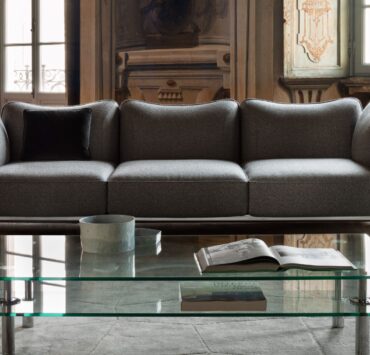At the end of each month, Editor-in-Chief Courtney Porter explores five standout things defining the design moment – this month she gets into colorful collectible design aesthetics, why your marketing isn’t working and what to do instead, wellness and resilience design, and the hottest markets for new construction.
1. Aesthetic trend: Playful post-modernism
If you are in New York City, I recommend a visit to Perrotin’s gallery to check out Josh Sperling’s first solo show “Big Picture” to discover the artist’s first foray into functional design pieces. His seating and mirrors embrace a vibrant rainbow color palette and playful organic shapes that blur the line between art and design. The show is on view now through August 1st and it is a lot of fun!
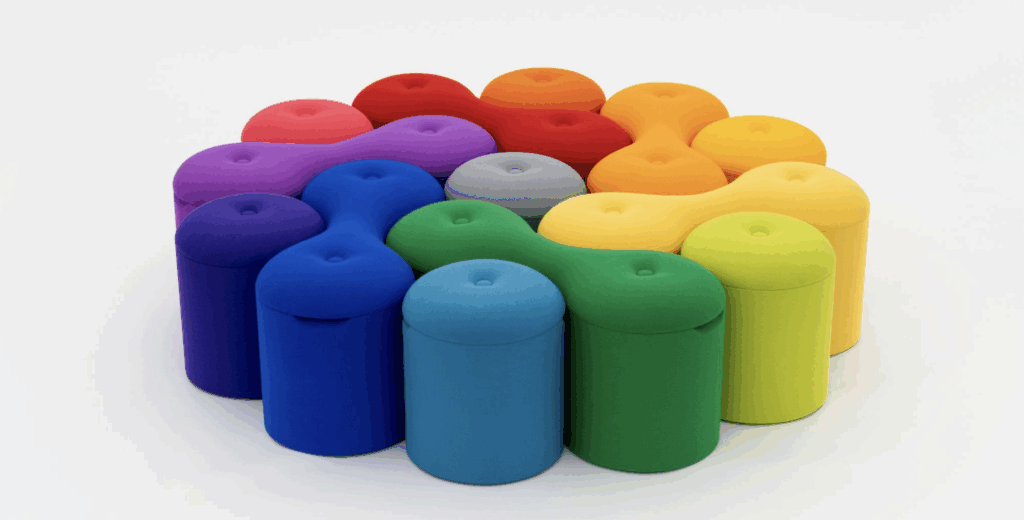
Carpenter’s Workshop announced a new line of furniture this month by renowned Dutch artist/designer Maarten Baas. The collection includes seating and sculptural objects, like the rocking chair pictured below, which are similarly playful and colorful.

Both of these reminded me of the Hermes furniture presentation at Salone del Mobile, in April of this year. The presentation ‘hid’ the brand in discoverable gallery nooks, letting the unbranded color-blocked furniture pop against the white backdrop.
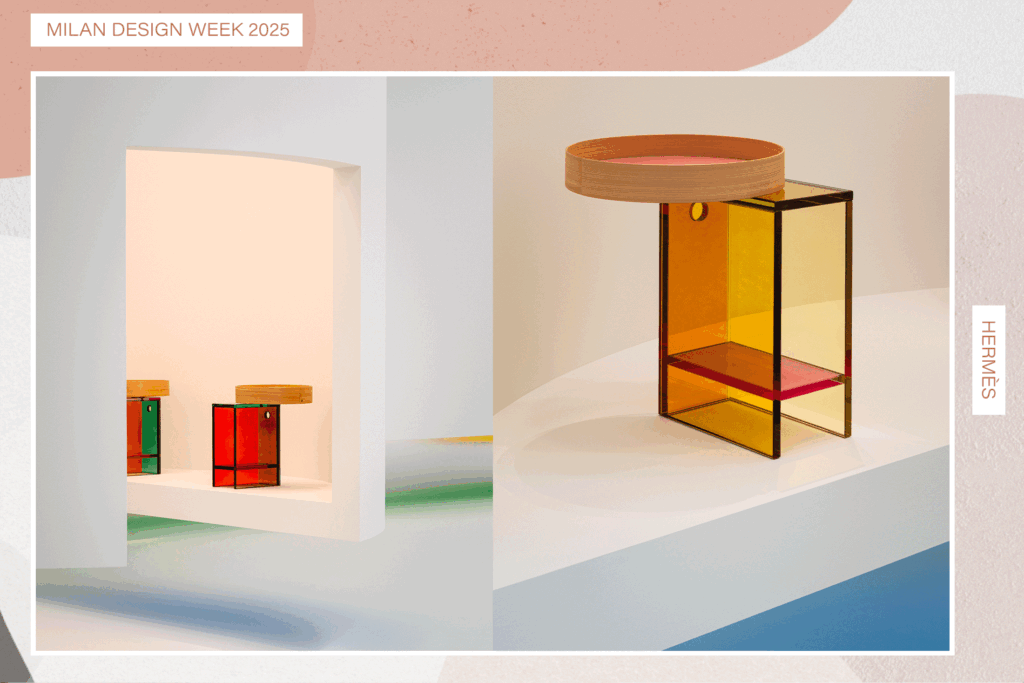
Each of these collections nods to the postmodern furniture of the Memphis Group era, but each brings something distinctly contemporary to the table. They are creations that could only exist today — responding to a global, tech-driven and fluid design landscape. (See: Phygital aesthetics and Loud luxury).
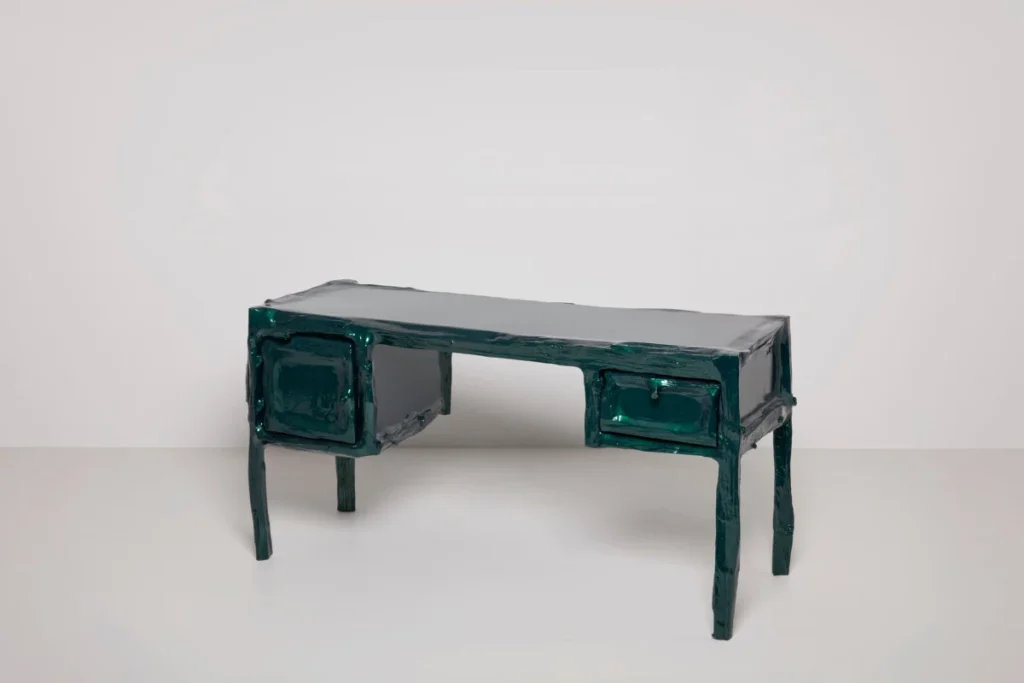
2. The modern luxury experience: Building cultural ecosystems
There is often a major disconnect between furniture being sold and the greater world and interests of their consumers, which is why marketing efforts fall flat or are unreplicable. Straightforward marketing efforts (hosting an networking event, posting about it online) used to work, but not anymore – not in the fluid, phygital world we inhabit today. Luxury marketing has, indeed, evolved.
Smart brands understand that what works is building their own cultural ecosystems, connecting the dots between two or more of their customers’ interests, or, if they are savvy enough, acting as purveyors of taste, introducing their customers to things they don’t know about yet. Here is an example:

This month, Range Rover invited a selection of top collectible design galleries (Maurice Verbaet Gallery , Modern Shapes Gallery , Studio Arno Declercq , St Vincents , Ashtari Carpets , Moss Studio , H. Gallery , Koen van Guijze) to participate in an exhibition in Knokke-Heist, Belgium, and discreetly hid one of its premium SUVs inside. Aptly titled SCENE, the revolving gallery (open now through August) makes the connection between their product (luxury SUV) as an aesthetic and functional discretionary purchase to other aesthetic and functional discretionary purchases (collectible furnishings) their ideal clientele might be interested in – if only they knew about them. SCENE positions Range Rover not just as experts in car manufacturing, but also as cultural tastemakers. It gives their existing customer base reasons to continue interacting with the brand without explicitly talking about the vehicle.
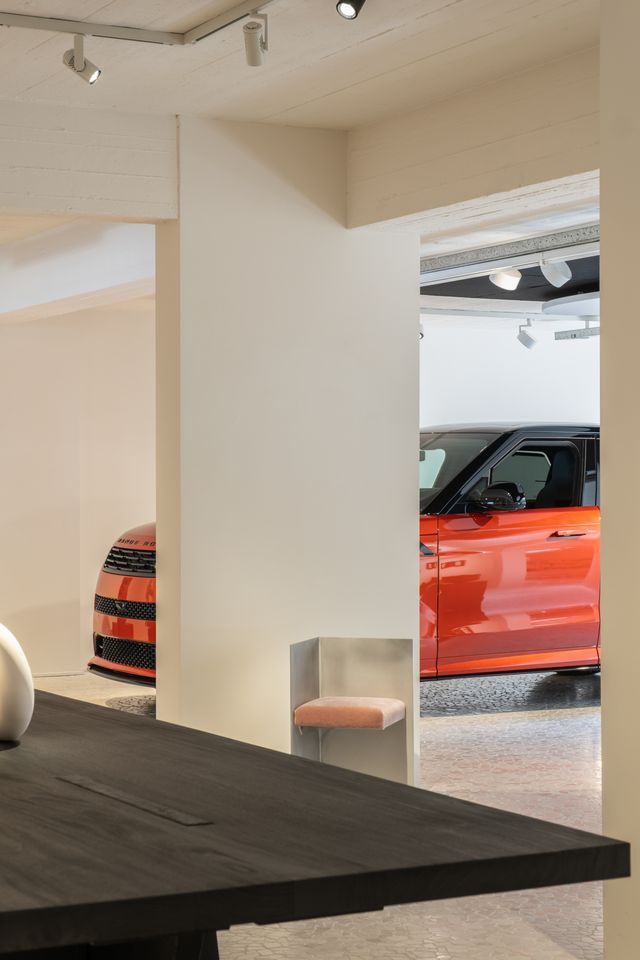
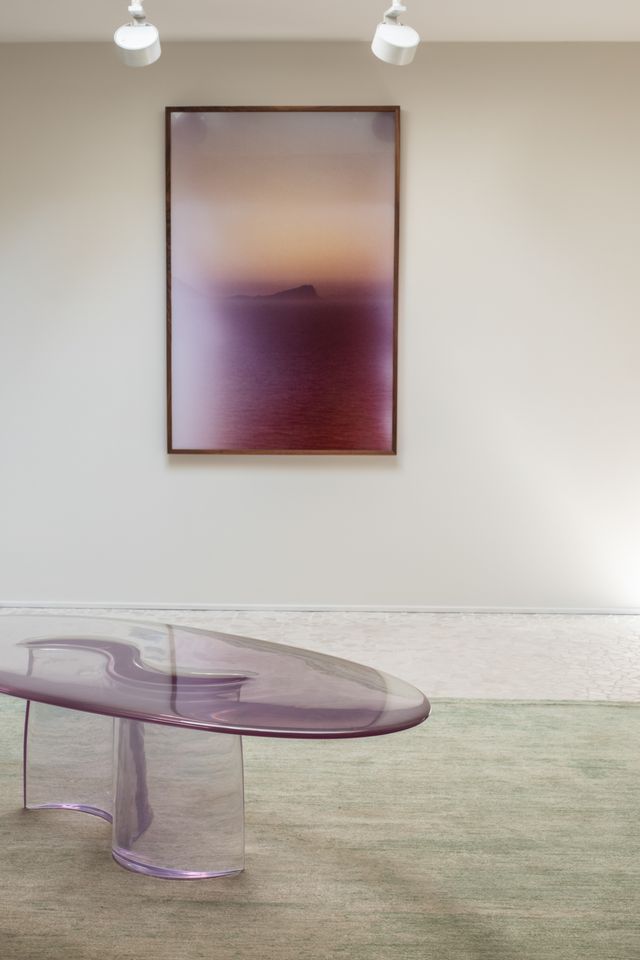


“Building cultural ecosystems is part of the modern luxury experience,” says Emm, the creative director and curator of SCENE, “In a landscape where cultural relevance is the currency of our time, brands like Range Rover can inspire consumers by creating spaces for intellectual stimulus and conversation. It’s like that one friend pointing out a good book or great playlist. High quality is expected. Taste is rare. So the brand narrative becomes a starting point rather than the destination.”
In other words, lead with or bury the commercial – make it brief and then show that you understand how important your product is in relation to the rest of your customer’s world. In the case of furniture this often means: omnipresent, but in the background.
When your customers host guests at home, they’re probably not spending the evening talking about the furniture they’re sitting on. So what are they talking about? (The White Lotus finale, most likely.) Design experiences around that. Make your content about what’s actually on their minds. The more omnipresent, but in the background your product is, the more powerful your brand becomes.
3. The future will be “resilient”
At the LA Design Festival a few weeks ago, the sustainability conversation took on a renewed sense of urgency. FORT LA premiered the first episode in its documentary series Rebel Architects about the architects who built Venice Beach, followed by a panel discussion that explored topics ranging from gentrification to how the city’s architectural heritage intersects with contemporary climate challenges. One of the dominant themes was resilience — a word now at the center of the design world’s response to environmental crisis.
As climate catastrophes become routine, the term “resilience” has emerged as the sustainable design buzzword of choice. It’s urgent and, importantly, it has a less political bent than language like “climate action” or “decarbonization.” Resilience, by contrast, is pragmatic, arguably more populist.
In addition to being politicized, sustainability also became too associated with premium price points. Even if that wasn’t always the reality, that perception became reality.
The uptick in use of the term “resilience” rather than “green” or “sustainable” resonates with homeowners, developers and policymakers alike, especially in California in light of the January wildfires. It speaks to preparedness, adaptation and recovery. These sustainability principles have not changed, but the way they are being packaged has.

The ethos of “resiliency” is already being realized in built form through projects like AAHA Studio’s Case Study 2.0. Their prototype home uses fire-resistant materials and off-site fabrication, taking a thoughtful approach to the landscape and infrastructure. Case Study 2.0 balances affordability, aesthetic ambition and sensitivity to the fire-prone region, offering a replicable model for building smarter and safer in California’s most vulnerable zones. This is precisely the balance of priorities that “resilient design” will be juggling going forward.
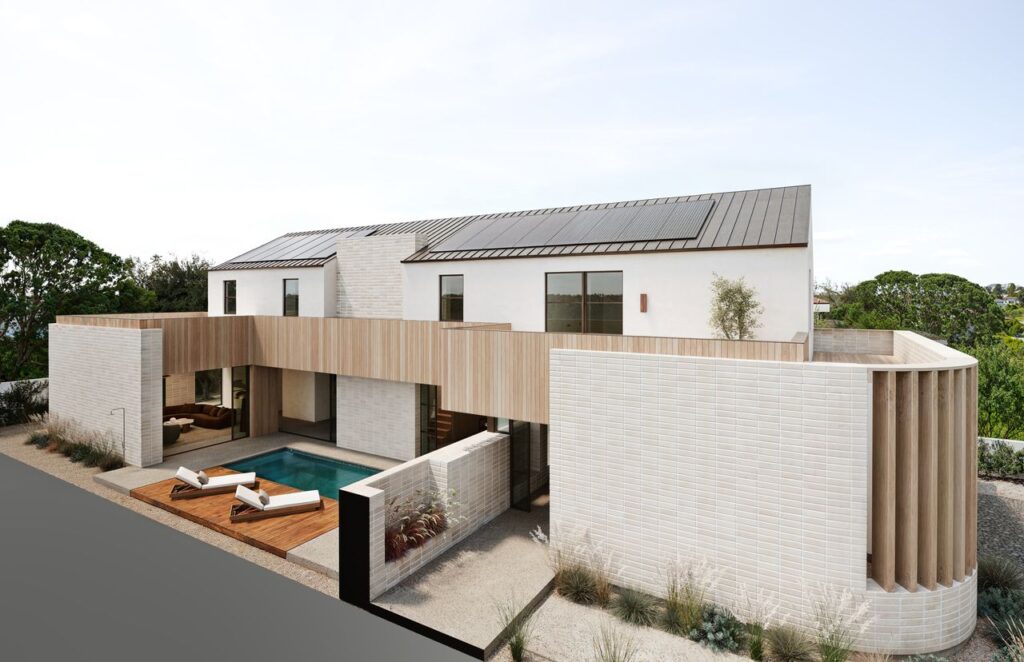

Globally, the industry is already running with “resilient” momentum. Perkins&Will’s ongoing research into modular timber housing systems aims to deliver scalable, sustainable solutions for both the housing crisis and climate challenge. And acclaimed architect Bjarke Ingels, who is serving as guest editor of Domus throughout 2025, devoted his last issue to the potential of wood as a transformative, resilient building material.
(See also: Further reading on wood and resiliency in WSJ here and read about USGBC California’s recent acquisition of the national organization Contractor’s Commitment to Sustainable Building Practices as well as their Wildfire Rebuilding Guide. The initiative equips contractors to improve performance across five areas including carbon, water and wellness, while expanding zero-emission equipment and workforce training).
4. Wellness design
Moving on from planetary preservation to preservation of the self: Wellness is now a lifestyle priority. The global wellness real estate market is surging. It reached $584 billion in 2024, and is projected to double to $1.1 trillion by 2029. As a result, architecture and design-build firms have begun expanding their services to offer turnkey wellness design services for gyms, medspas and clinics focused on longevity. These designs merge biophilic aesthetics, cutting-edge technology and holistic well-being to meet the demand for wellness design, seeping from commercial and hospitality projects into the home.
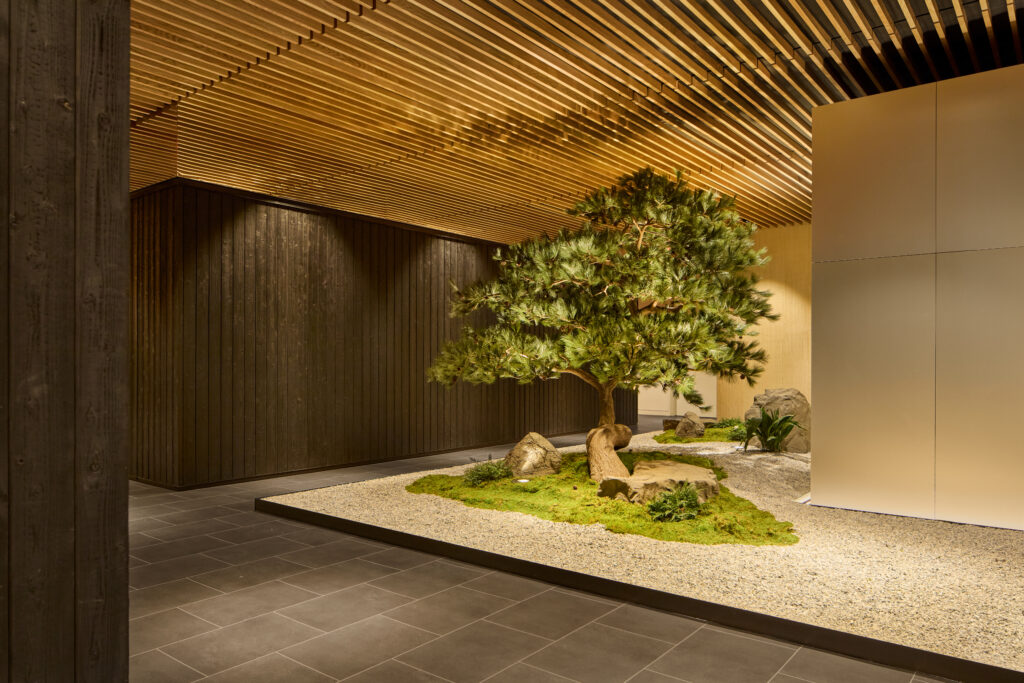
Homeowners are carving out dedicated wellness zones like spa-inspired bathrooms or meditation corners, often equipped with at-home recovery tools like red light panels, saunas and smart wearables. Designers are invoking neuroaesthetics –using colors, textures and natural elements to achieve a desired feeling (calm, energized, etc). They are attending entire conferences dedicated to the topic.

Hospitality designers are touting wellness tourism as a priority. (Watch: White Lotus, Season 3). “The wellness design movement has pushed the envelope of curating intentional guest experiences and prompted a more conscientious approach to materiality,” said Liana Hawes Young, creative director at Wimberly Interiors. During the restoration of Hotel del Coronado, her team focused on wellness and biophilia, restoring original oak elements and selecting organic materials, like those in the guest rooms pictured below.
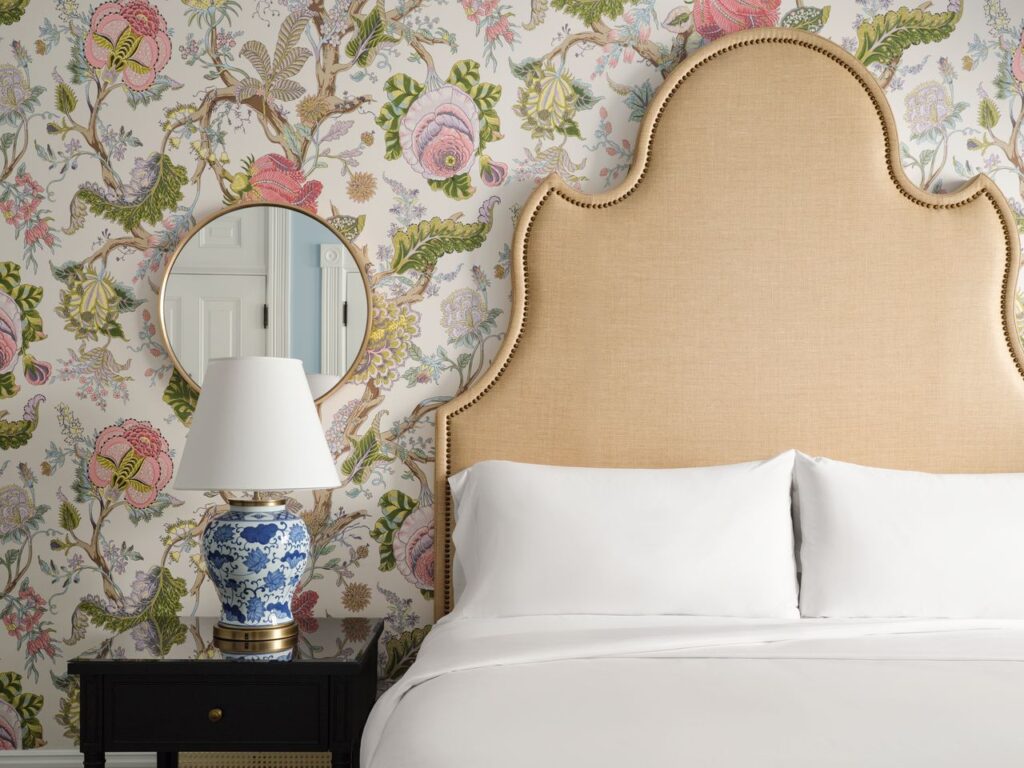
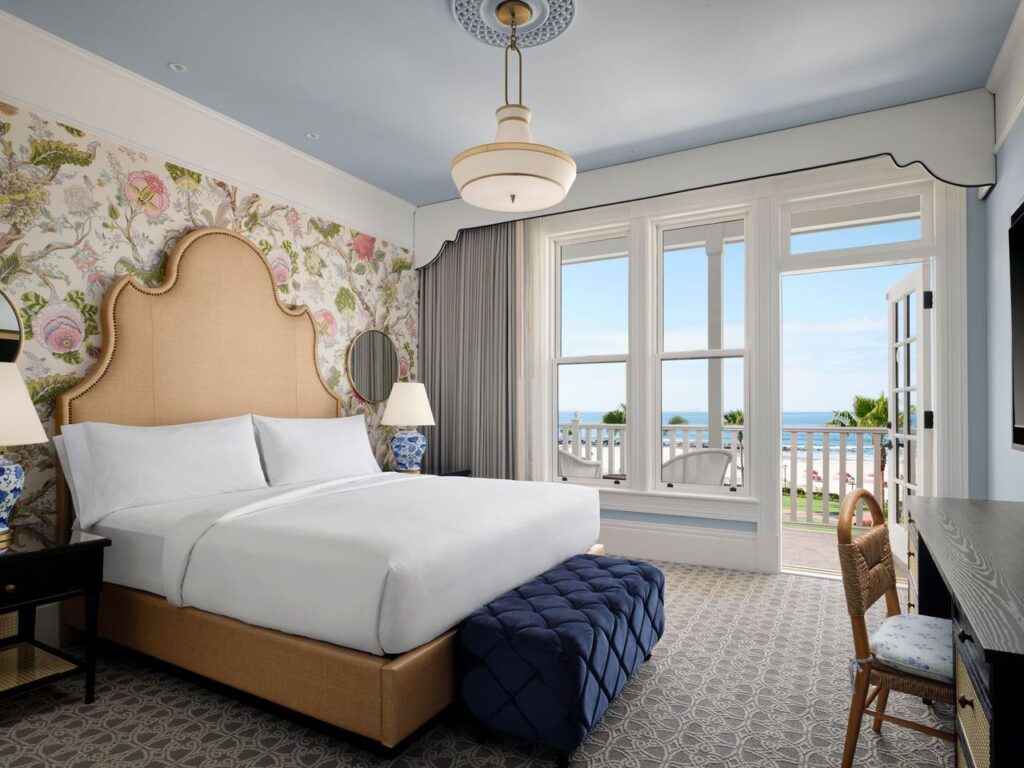
Membership-based luxury med spas and longevity clinics, like Biograph, Humanaut Health, Fountain Life and Eternal have transformed the concept of sterile service centers into immersive sanctuaries you’ll want to spend the whole day in by blending their clinical innovation with nature-infused aesthetics.
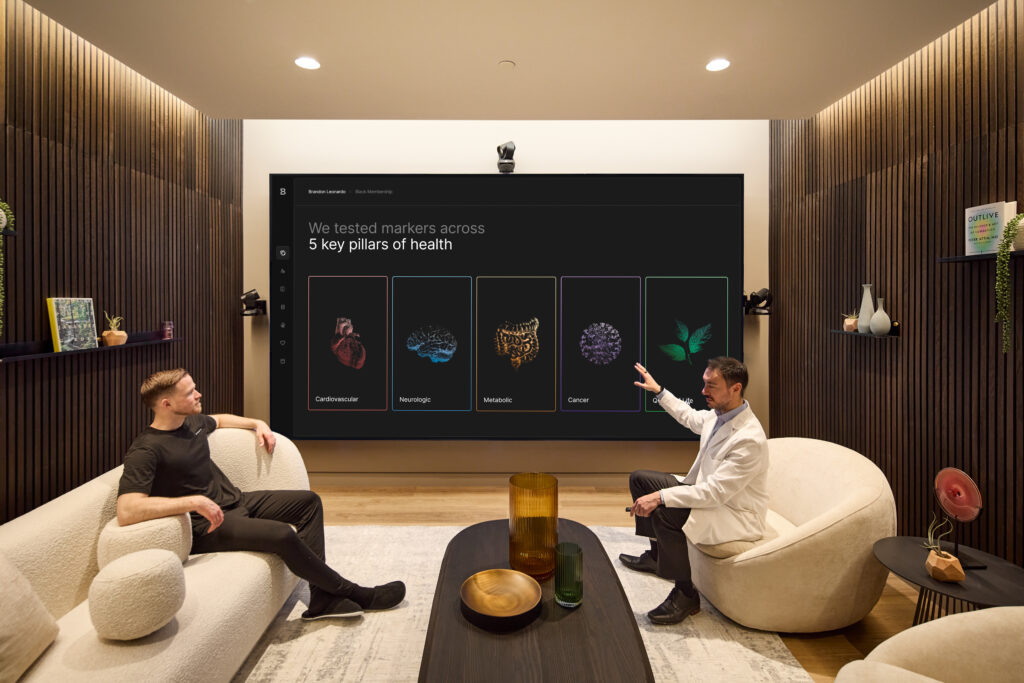
As Lucinda Tay of OOM Architecture, designer of the Biograph clinic in NYC, explains “Wellness was once a luxury… but today it’s evolved into a daily priority.”
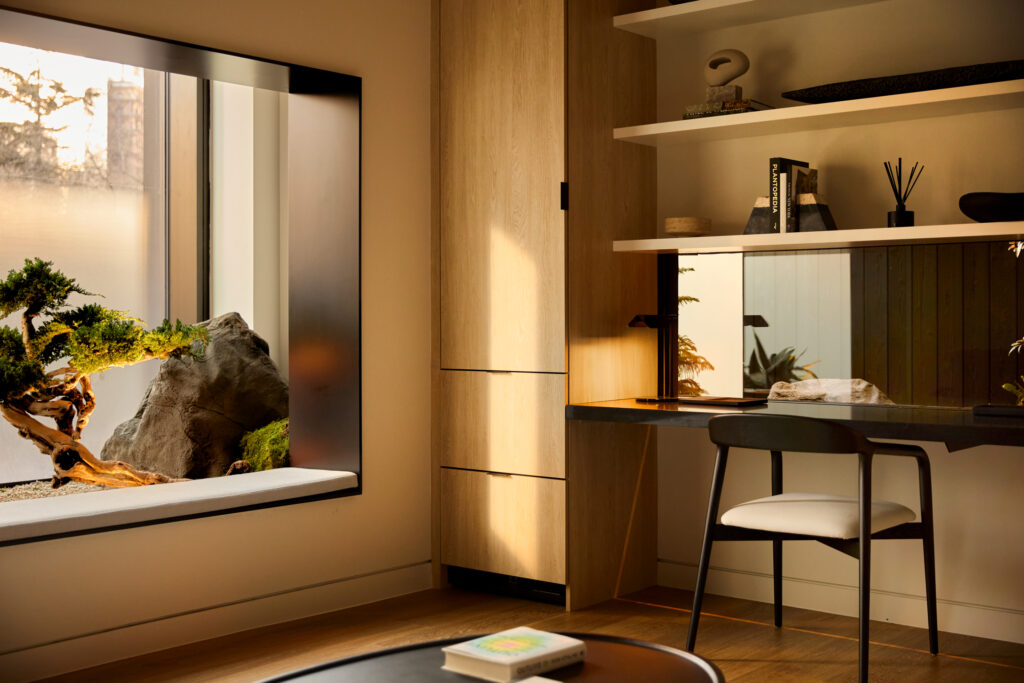
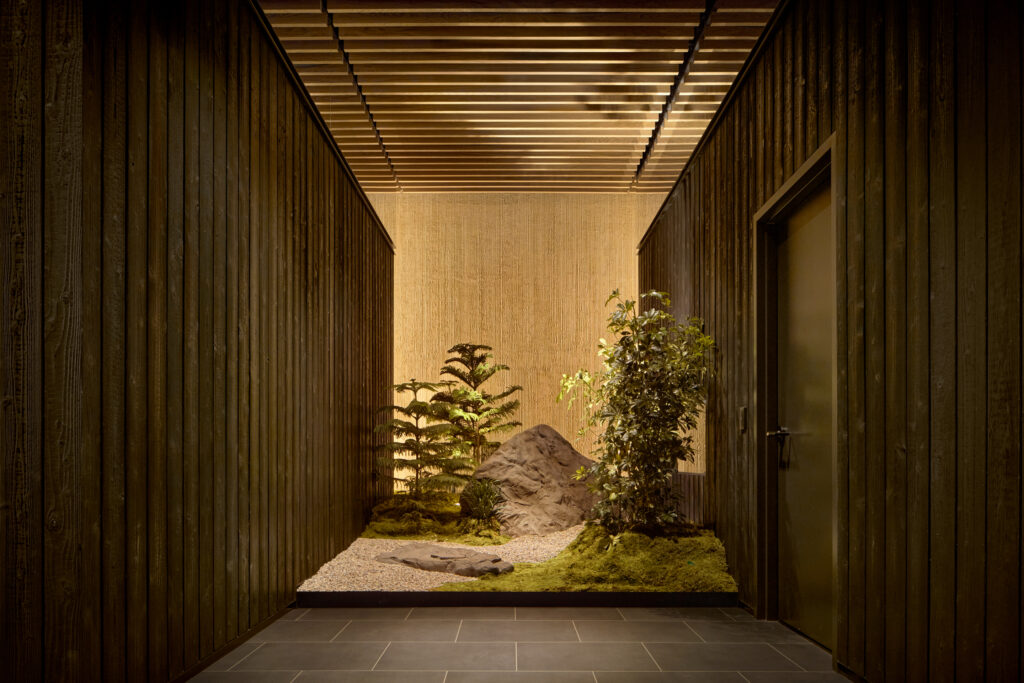
Their wellness ecosystem layouts feature elements like tunable circadian lighting and integrated nature in the form of large windows and indoor gardens to create spaces that prioritize cognitive function and emotional well-being.

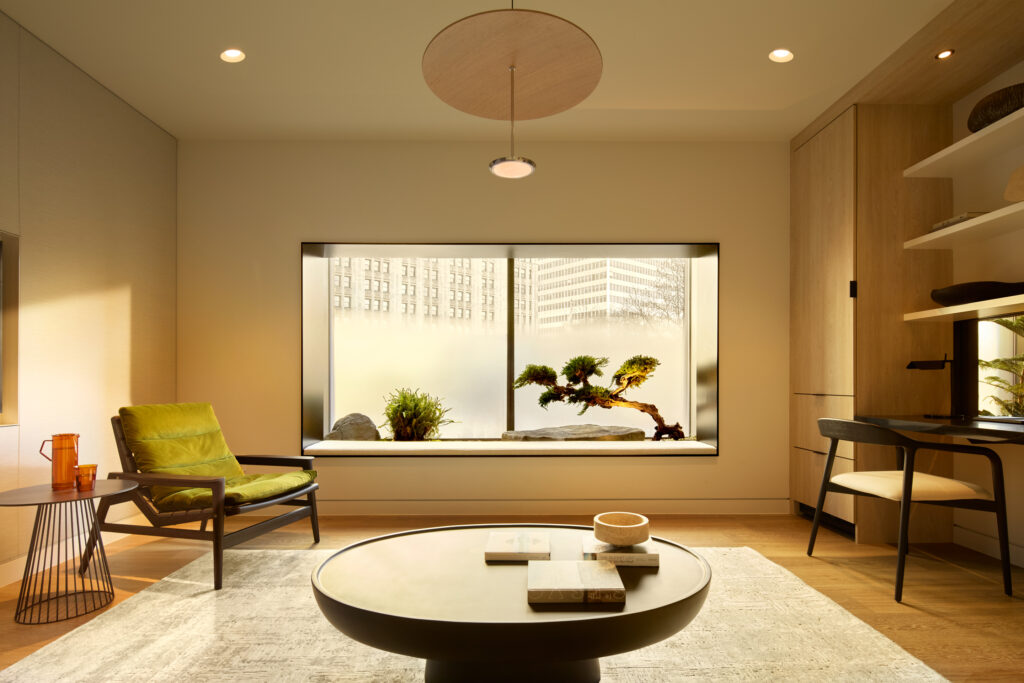
5. Scottsdale and other mid-sized metros pick up sales steam
As of July 2025, sales on luxury single-family home construction in the United States are up nearly 19% year over year in a select group of midsized metro areas (Scottsdale, AZ, Austin, TX, Nashville, TN, Charlotte and Raleigh, NC, Orange County, CA, and Salt Lake City, UT) And, notably, homes offering wellness design features and smart tech, located in perceived ‘climate-safe’ zones are selling quickly.
Austin, Texas, continues to lead the market, fueled by high-net-worth migration from the West Coast and an appetite for spacious design-forward properties. But this month there were some newcomers to the list: In particular, Scottsdale and Paradise Valley, Arizona are becoming the hotspots for tear-down-and-rebuild activity, largely driven by Californians relocating east who still require easy accessibility to the golden state.

After hearing Scottsdale mentioned in conversation more than a few times, I chatted with the designers of the Grand Hyatt Hotel & Spa in Scottsdale and the regions’ leading design trade furniture showroom, Alexander Sinclair about what clients are wanting in the area. Here are a couple points that sum it up nicely:
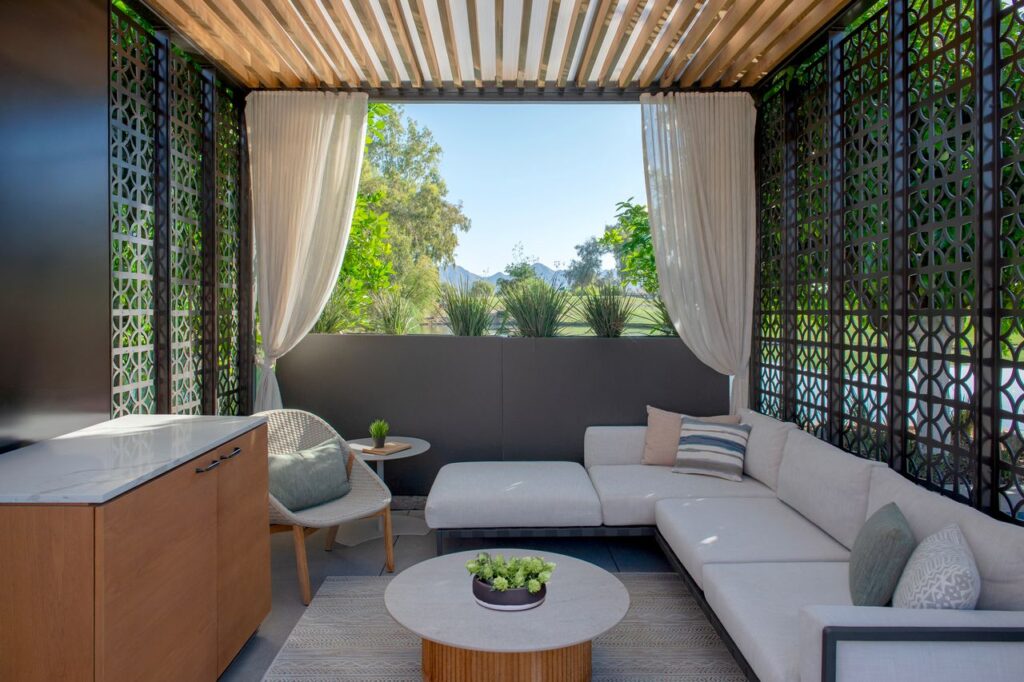
Richard Luis, Managing Principal, Architecture, and Dallas Office Director of WATG, recently worked on the redesign of the Grand Hyatt in Scottsdale, and had this to say, “Scottsdale’s tourism sector continues to thrive, with more than 11 million visitors in 2024 and over $3.5 billion in direct travel spending…this momentum has firmly positioned Scottsdale as one of the strongest luxury hospitality markets in the country, with nearly 87% of its 12,500 hotel guest rooms falling into the upscale or luxury category. We are seeing a wave of new resort investment focused on experience-driven stays, from private terraces designed to frame and celebrate the desert landscape to wellness offerings inspired by native botanicals.”
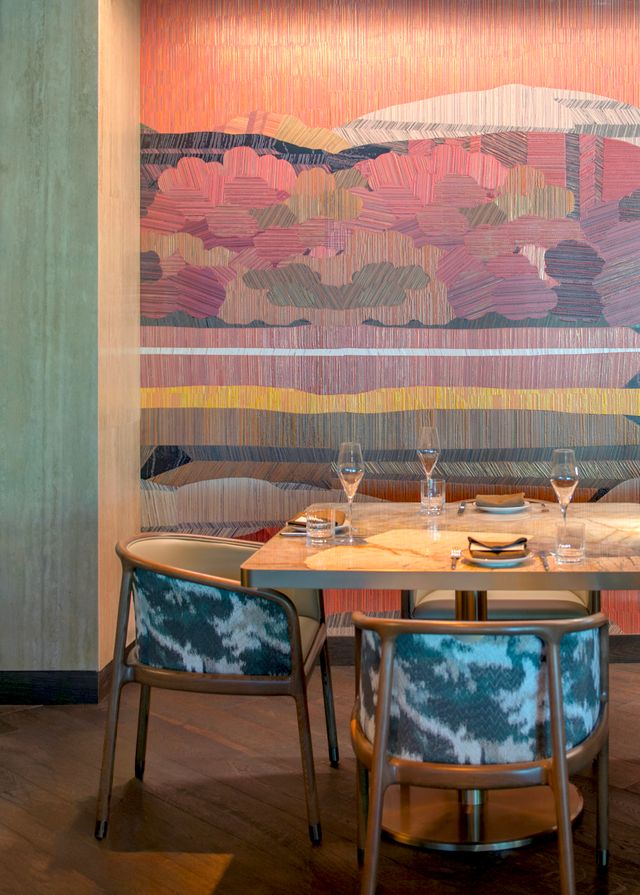
Teresa Valdez from Alexander Sinclair also observed, “…a lot of focus on “wellness-centric design” in the area, which includes “soft lighting, acoustic-conscious materials, ergonomic furnishings and wellness spaces (like meditation rooms or luxury spas).”
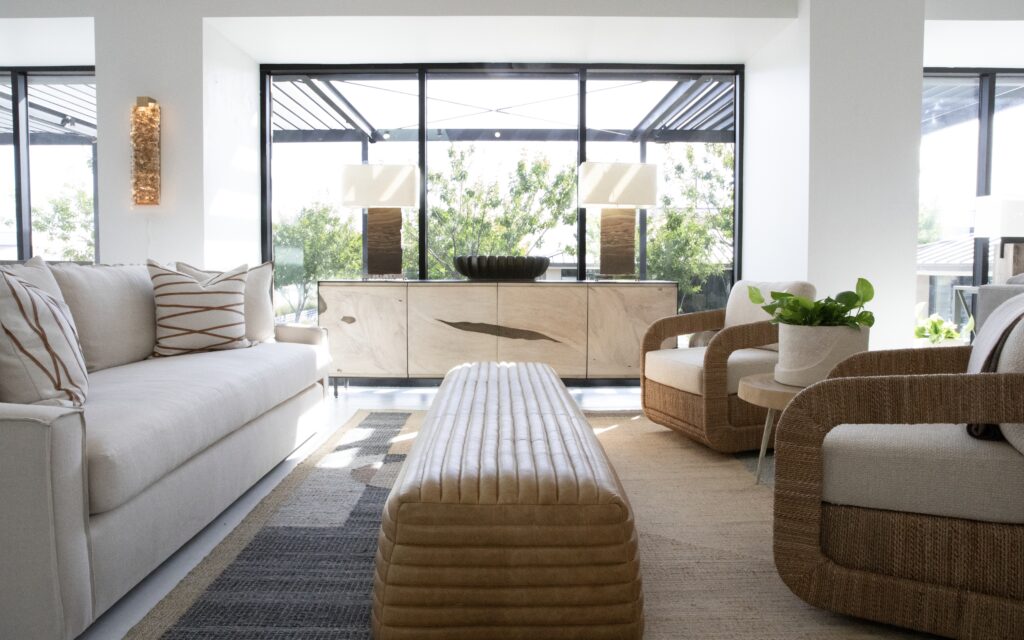
As far as what’s selling in her showroom, she says designers and their clients are, “Shifting away from gray and cooler tones and toward warmer neutrals, rich browns, and ochres.” They are gravitating towards ‘oversized, upholstered seating in textural fabrics such as bouclé, mohair, and washed linen, and they are investing in artisan case goods with unique veneer patterns, custom stains, or hand-applied finishes.’ And as far as shapes are concerned, modern and glam is very much in: “curved silhouettes,” she says, “from sofas and sectionals to coffee tables and consoles.”
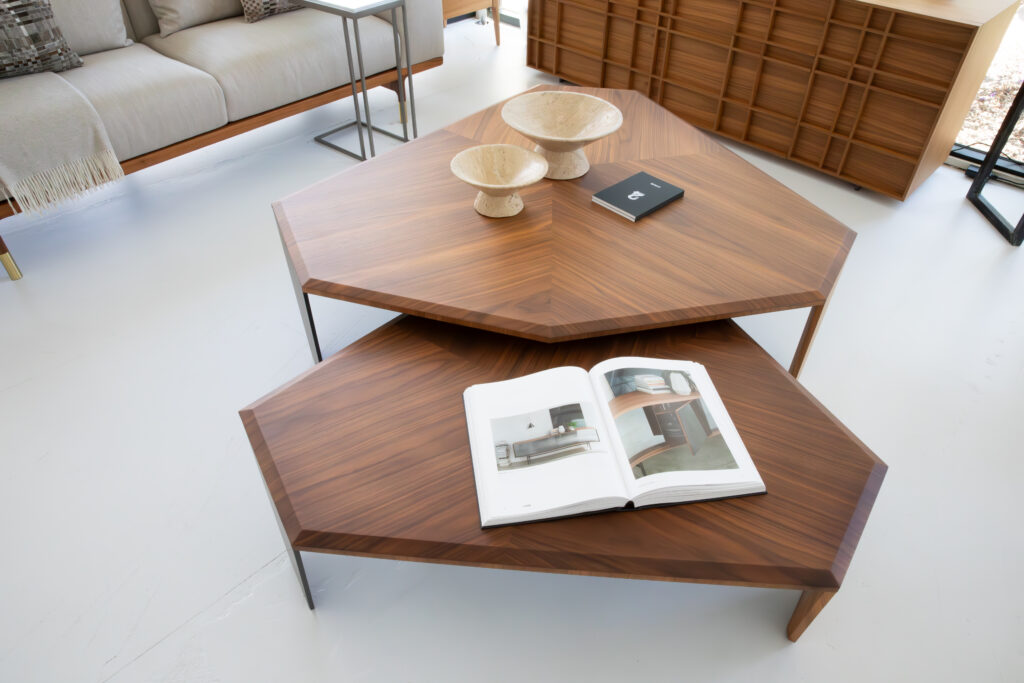
TLDR: Here’s the upshot
- Emphasis on playfulness: Collectible furnishings are awash in color and whimsy around the world.
- Creating cultural ecosystems: Traditional marketing efforts are proving less effective. Instead, they need to be focused on creating cultural ecosystems.
- Resilient design: Selling sustainability now means selling “resilience” – which implies a greater sense of urgency. As it becomes the global standard, green interior design is no longer synonymous with luxury.
- Wellness design is a huge growing market.
- New construction: The money is moving to midsized metros with land, community and perceived climate-safe zones.
- White Lotus, season three is really an excellent example of all of the above, having captured the cultural moment by exploring themes of wellness tourism and climate anxiety (tsunami!). Its whimsical, colorful production design lent itself nicely to a furniture collaboration with CB2. And if we needed further reminder of the show’s ongoing influence on the luxury design and art market, Sotheby’s Magazine published a story this morning about the Four Seasons sculpture garden in Lanai, expanding the White Lotus cultural ecosystem.


